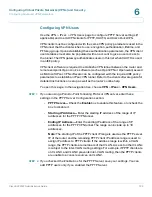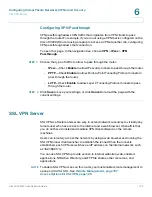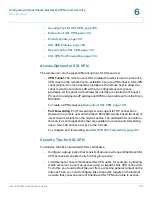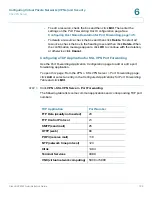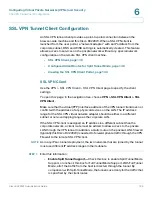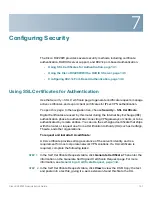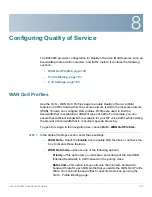
Configuring Virtual Private Networks (VPNs) and Security
SSL VPN Server
Cisco RV220W Administration Guide
135
6
STEP 1
Enter this information:
•
Local Server IP Address—
Enter the IP address of the internal host machine
or local server.
•
TCP Port Number—
Enter the port number of the TCP application that
enables port forwarding.
STEP 2
Click
Save
to save your settings, or click
Cancel
to reload the page with the
current settings. Click
Back
to return to the
VPN > SSL VPN Server > Port
Forwarding
page.
Configuring Host Name Resolution for Port Forwarding
Use the
Port Forwarding Host Configuration
page to configure a hostname
(FQDN) for the network server to give users an easy way to connect to the server
without having to remember and enter an IP address.
NOTE
The local server IP address of the configured hostname must match the IP address
of the configured application for port forwarding.
To open this page:
From the
VPN > SSL VPN Server > Port Forwarding
page,
click
Add
or select an entry in the
Configured Host Names for Port Forwarding
Table
and click
Edit
.
STEP 1
Enter this information:
•
Local Server IP Address—
Enter the IP address of the internal host machine
or local server.
•
Fully Qualified Domain Name—
Enter the fully qualified domain name for
the TCP application.
STEP 2
Click
Save
to save your settings, or click
Cancel
to reload the page with the
current settings. Click
Back
to return to the
VPN > SSL VPN Server > Port
Forwarding
page.


